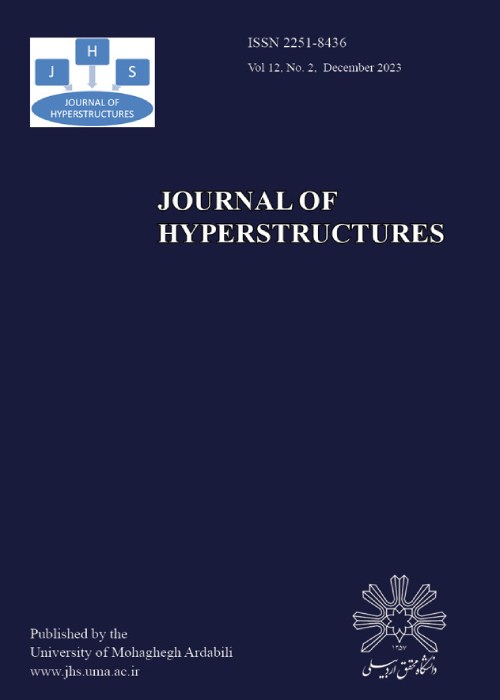فهرست مطالب
Journal of Hyperstructures
Volume:10 Issue: 2, Summer and Autumn 2021
- تاریخ انتشار: 1400/11/11
- تعداد عناوین: 7
-
Pages 86-107
Considering today’s complexity, we may have to deal with numbers that are dependent, like those of positive, neutral and negative values and require multi- attributes function. Also, the most significant factor is to combine these numbers to generate a single real number. When decision-makers come across such an environment, the decisions are harder to make and decision makers cannot use the soft set theory, a single attribute function. To overcome this hindrance, we introduce the notion of picture fuzzy hypersoft set with technique of order of preference by similarity to ideal solution (TOPSIS) method. This eventually helps the decisionmaker to collect the data without any misconceptions. We present some properties of the correlation coefficient and aggregation operators on it. Also, we propose an algorithm for the TOPSIS method based on correlation coefficients to identify a suitable leader, who can bring changes to society in the socio-political context. Finally, we present a comparative study with existing studies to show the effectiveness of the proposed method.
Keywords: Picture fuzzy set, Hypersoft set, TOPSIS, Correlation coefficient -
Pages 108-117
In this paper, we study domination in an edge product hypergraphs and found some results on it. It is proved that the unit edge in a unit edge product hypergraph is a dominating set of hypergraph H. Later, we obtained some results which are relatives of the Nordhaus-Gaddum theorem, regarding the sums and products of domination parameters in an edge product hypergraph and their compliments.
Keywords: Edge Product Hypergraph, Unit Edge Product Hypergraph, Nordhaus-GaddumTheorem, Domination -
Pages 118-128
In this paper, we introduce the concept of a fuzzy weakly irreducible ideal of a commutative ring R with identity. This concept is a generalization of the concept of a fuzzy strongly irreducible ideal. Also, relationships between fuzzy maximal, fuzzy quasi primary and fuzzy weakly irreducible ideals in a ring are proved.
Keywords: Fuzzy weakly irreducible ideal, fuzzy quasi primary ideal, fuzzy prime ideal -
Pages 129-136
In the present paper, we further generalize and extend various results on zeroes of polar derivatives of polynomials due to Gulzar, Zargar and Akhter (2019), who gave extension and generalization of various results on Enestrom-Kakeya theorem established by various researchers in the literature.
Keywords: Zeros, polynomial, Enestrom-Kakeya theorem, polar derivative -
Pages 137-149
A meromorphic function on an open set D contained in the finite complex plane C is of the form of the ratio between two analytic functions defined on D with denominator not identically zero. Poles of meromorphic functions are those zeros of the denominator where numerator does not vanish. Finding all poles of a meromorphic function is too much difficult. So, it is desirable to know a region where these poles lie. In the paper we derive a region containing all the poles of some meromorphic functions. A few examples with related figures are given here to validate the results obtained.
Keywords: Meromorphic function, poles, order -
Pages 150-171
In this paper, we introduce certain new classes of contraction mapping and establish fixed point theorems for such kind of mapping in triangular fuzzy metric spaces.
Keywords: Triangular fuzzy metric space, Fixed points α − η − GF − contraction, Generalized fuzzy metric space -
Pages 172-191
The purpose of the present paper is to study some properties of Sasakian manifolds with respect to Zamkovoy connection. Here, we study pseudo-projectively flat, quasi-pseudoprojectively flat and φ-pseudo-projectively flat Sasakian manifolds admitting Zamkovoy connection. Further, we study generalized pseudo-projective φ-recurrent Sasakian manifolds along with some more curvature properties of Sasakian manifolds with respect to Zamkovoy connection.
Keywords: Sasakian manifold, Zamkovoy connection, pseudo-projective curvature tensor


